Great Danes are big dogs, so it can be very scary when they show concerning behaviors. Snapping, nipping, biting, lunging, and growling make people nervous, and with good reason! Great Dane aggression is dangerous and unacceptable.
As a pet parent, you may have found this article because of concerns you have following aggressive behavior, and my hope is that this article will put your mind at ease.
In this article we’re going to talk about all of it:
- Why Great Danes growl
- How to prevent aggression while raising a puppy
- How to address issues with Great Danes that lunge and bark at strangers
- Leash reactivity
- Snapping and biting behavior
- How to deal with dog aggression and not liking other dogs
- Training tips for Great Dane aggression & growling
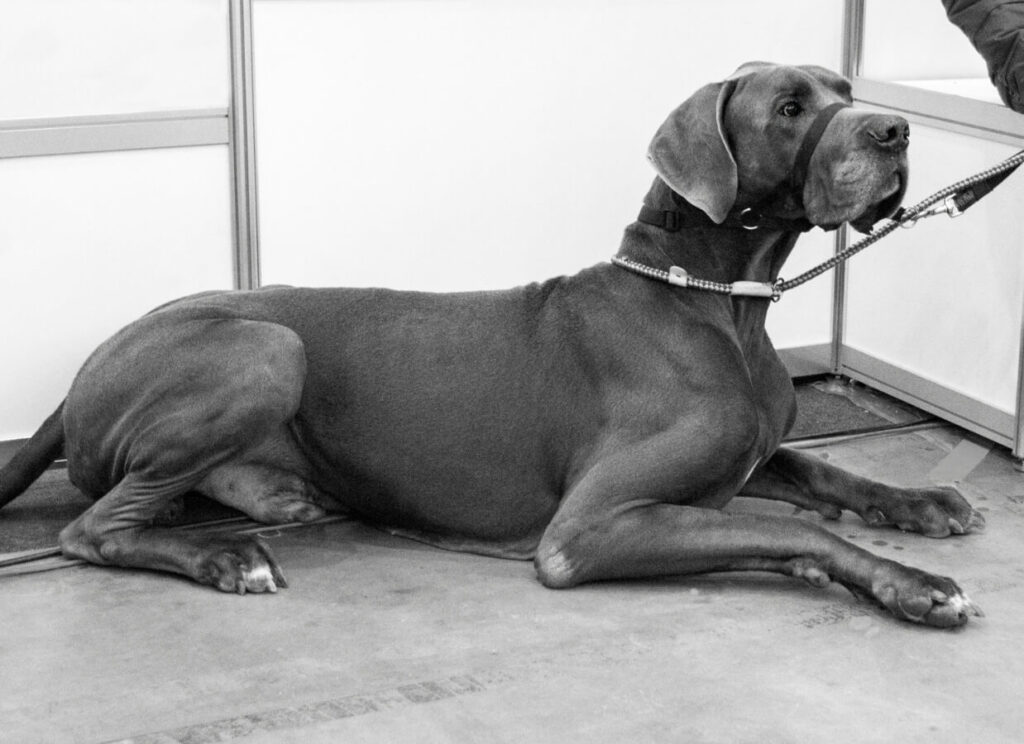
Causes of Great Dane Aggression & Growling
There are many reasons why you may be seeing aggression and growling in your Great Dane. I’ll be digging into some training, safety, and management tips below. To start, check out this list and identify where your dog might be:
- Fear and Anxiety:
Great Danes, like any dog breed, may exhibit aggression or growling when they feel threatened or fearful. Anxiety-provoking situations, such as new environments, loud noises, harsh training methods or unfamiliar people can trigger defensive behaviors. - Territorial Instincts:
Great Danes have a natural instinct to protect their territory. Aggression may arise when they perceive a threat to their home or family, leading to defensive behaviors like growling. - Lack of Socialization:
Insufficient exposure to diverse environments, people, and other animals during the early stages of a Great Dane’s life can result in fear-based aggression. Proper socialization in puppyhood is crucial to prevent such issues. - Medical Discomfort:
Physical discomfort or pain due to an injury or underlying health issue can cause a typically gentle Great Dane to exhibit aggression. It’s essential to rule out any health concerns through a thorough veterinary examination. - Protective Instincts:
Great Danes, known for their loyalty, may display aggression when they perceive a threat to their family members. This protective instinct, while admirable, should be managed through proper training. - Dominance Issues:
Dogs, including Great Danes, may show aggression as a display of dominance. This behavior can manifest in various situations, such as guarding resources or asserting control, and is often rooted in hormones (example, intact males who may posture towards other dogs). - Previous Traumatic Experiences:
A Great Dane with a history of abuse, neglect, or traumatic experiences may exhibit aggression as a defense mechanism. Understanding and addressing past traumas is crucial for behavioral rehabilitation. - Miscommunication or Misunderstanding:
Dogs communicate primarily through body language, and aggression may result from a misinterpretation of signals. It’s essential for owners to be aware of their Great Dane’s body language and respond appropriately. - Maternal or Paternal Instincts:
Female Great Danes, especially if they have recently given birth, may show protective aggression towards perceived threats to their puppies. Similarly, males may display protective behavior over their territory. - Genetic Predisposition:
Some dogs may have a genetic predisposition to certain behaviors, including aggression. Responsible breeding practices can help minimize the risk of inherited aggression traits.
Understanding the specific reason behind a Great Dane’s aggression or growling is crucial for implementing effective management and training strategies. In many cases, professional guidance from a veterinarian or veterinary dog behaviorist may be necessary to address the root cause.
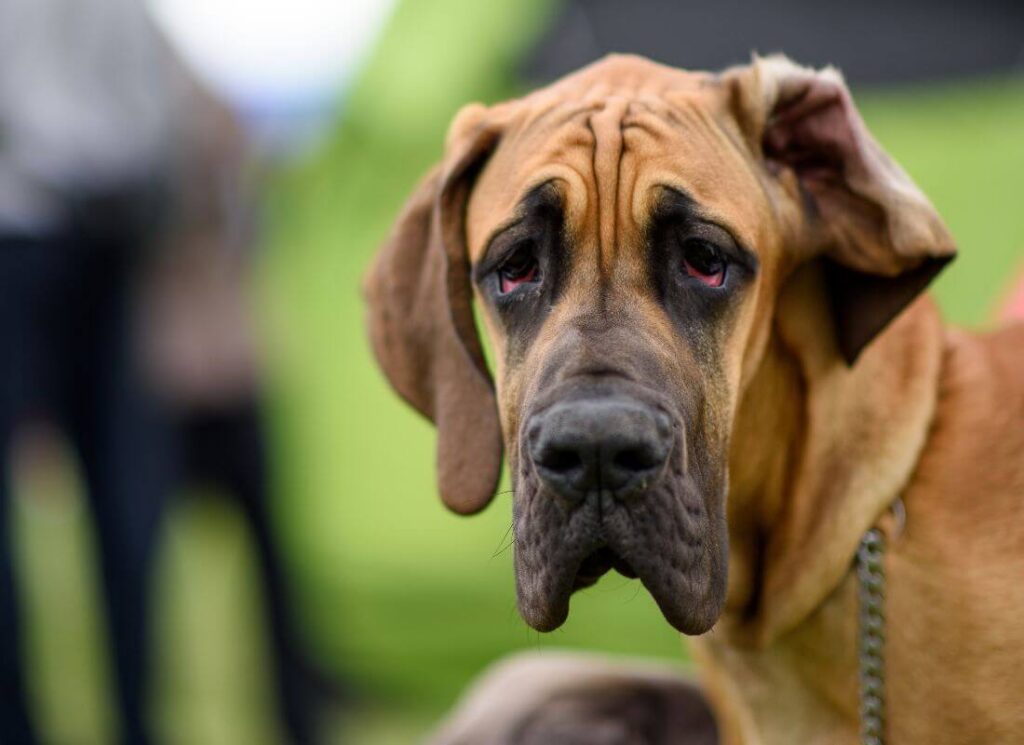
Great Dane Growling
When a Great Dane emits a growl, it is a communication method deeply embedded in their canine instincts. Despite their gentle and friendly nature, Great Danes, like all dogs, use growling as a form of expression.
Growling can convey a range of emotions and intentions, serving as a means of communication between the dog and its human companions or other animals.
In the context of a Great Dane, a growl might signify a variety of things, such as play, discomfort, anxiety, or a perceived threat.
It’s crucial for owners to pay close attention to the specific circumstances surrounding the growl, including the dog’s body language, to accurately interpret its meaning.
While it may be a warning sign, not all growls are aggressive, and understanding the context can help foster a positive and trusting relationship between the Great Dane and its human counterparts.
What to do if a Great Dane Growls at a Child
If a Great Dane growls at a child, it’s essential for both the safety of the child and the well-being of the dog to take immediate and measured steps.
First and foremost, it’s crucial that you do NOT punish the dog for growling (no matter how much you want to).
Instead, focus on ensuring the safety of the child by calmly and gently removing them from the situation. Supervision between the child and the dog should be increased, and interactions should be closely monitored. It’s advisable to consult with a professional dog trainer or behaviorist to assess the underlying cause of the growling and implement appropriate training techniques.
Additionally, teach children about appropriate behavior around dogs, emphasizing the importance of respecting the dog’s space and signals. Creating a positive environment and building trust between the Great Dane and the child is essential for fostering a safe and loving relationship over time. If concerns persist, seeking guidance from a veterinarian or animal behaviorist is recommended to address any potential behavioral issues in a constructive manner.
What to do if a Great Dane Growls at Strangers
It can be scary and disheartening if a Great Dane growls at strangers. If this happens, it is crucial to stay calm and avoid reacting with fear or aggression, as this can escalate the tension.
Ensure that the Great Dane is securely leashed and under control to prevent any potential harm. (We recommend using a martingale collar and basket muzzle on dogs that are aggressive or nippy towards strangers).
Distance the dog from the strangers and create a safe space to assess the situation. If the growling is towards your veterinarian, ask about Fear Free handling techniques, pre-appointment sedation, and management techniques for future veterinary visits.
Never ask a stranger to give your Great Dane treats! Instead, reward your Great Dane for engaging with you instead of being concerned about a stranger nearby.
Understanding the context of the growling is vital – it could be due to fear, anxiety, territorial instincts, or discomfort. Professional help from a dog trainer or behaviorist is recommended to address and modify the dog’s behavior effectively.
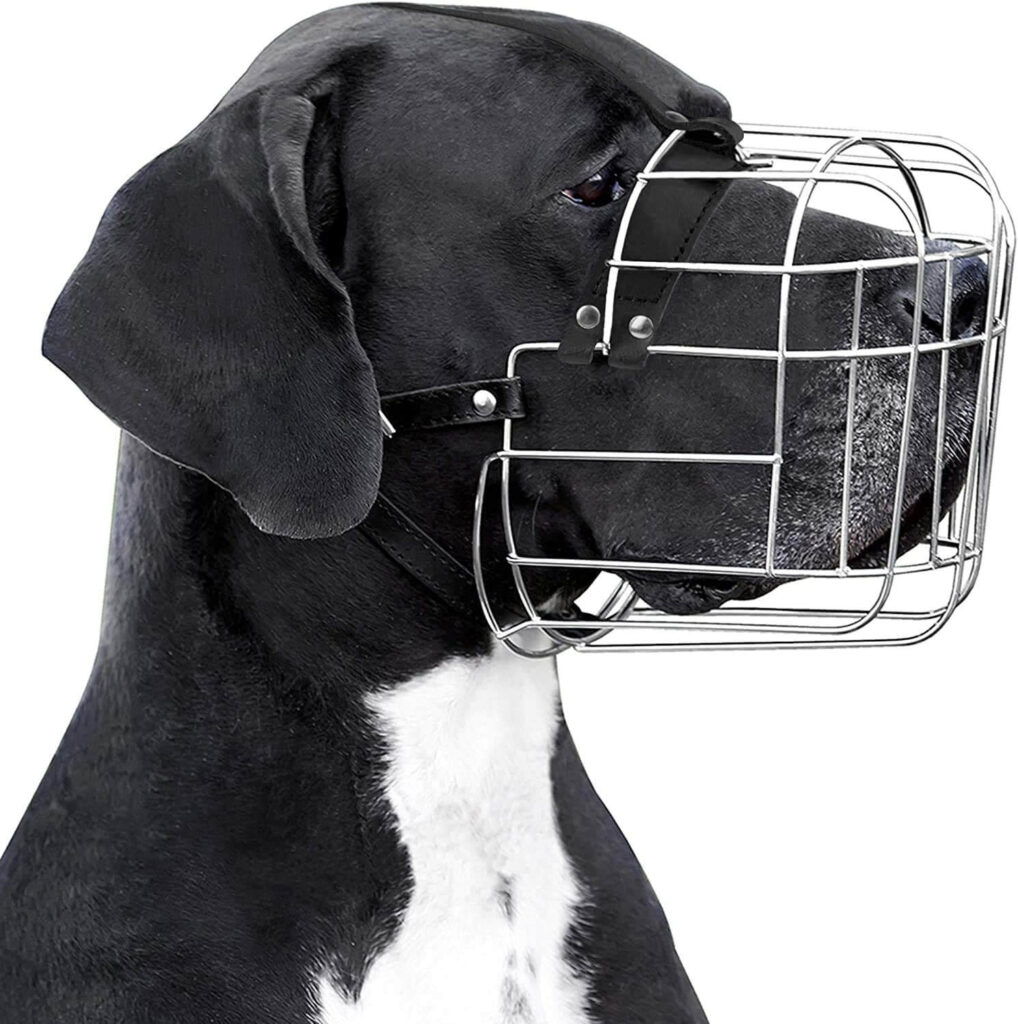
How to Train Aggressive Great Danes
It’s important that you really get to know your Great Dane and identify triggers that cause aggression and growling. Here are some common triggers for dogs that are easy to avoid once you know they exist. We’ve also included some training and management tips for each situation!
Leash Aggression Towards Other Dogs
- Positive Reinforcement: Reward calm behavior with treats and praise. Associate the presence of other dogs with positive experiences, reinforcing the idea that encounters lead to enjoyable outcomes.
- Maintain a Loose Leash: Keep the leash slack during walks. Tension on the leash can heighten your dog’s anxiety and trigger aggressive responses. A relaxed leash signals a sense of security.
- Use Distraction Techniques: Employ toys or treats to redirect your dog’s attention when approaching another dog. This diverts focus, reducing the likelihood of aggressive behavior.
- Choose Quiet Walking Routes: Opt for less frequented areas for walks initially. Minimizing encounters with other dogs provides a gradual approach to desensitization.
- Desensitization Exercises: Systematically expose your dog to controlled versions of the trigger, incrementally increasing the complexity of encounters. This gradual approach helps build tolerance.
- Seek Professional Guidance: Enlist the expertise of a professional dog trainer or behaviorist. Their insights can provide tailored strategies to address specific leash aggression issues.
- Stay Calm and Confident: Dogs often mirror their owner’s energy. Maintain a calm and confident demeanor during walks to convey a sense of security to your furry companion.
Aggression Over Food, Treats, and Toys
- Positive Reinforcement Training: Reinforce positive behavior using treats and praise. Reward your dog for allowing you to approach or handle their possessions. This creates positive associations with interactions around valuable items.
- Trade-Up Exercises: Engage in trade-up activities, exchanging a less valuable item for a more desirable one. This teaches your dog that giving up possessions results in a rewarding exchange.
- Avoid Punishment: Refrain from punishing resource guarding behavior. Punishment can exacerbate the problem and create fear, making your dog more defensive. Instead, focus on positive reinforcement and redirection.
- Respect Personal Space: Recognize and respect your dog’s need for personal space, especially when they have high-value items. Allow them to enjoy their possessions without constant intrusion.
- Use Food Puzzles: Introduce food puzzles or toys that dispense treats. This not only provides mental stimulation but also associates positive experiences with being around food.
- Training “Drop It” Command: Teach your dog a reliable “drop it” or “leave it” command. This skill allows you to safely retrieve items if needed without triggering guarding behavior.
- Rotate Toys and Resources: Periodically rotate your dog’s toys and possessions. This prevents them from becoming overly attached to specific items and reduces the likelihood of guarding behavior.
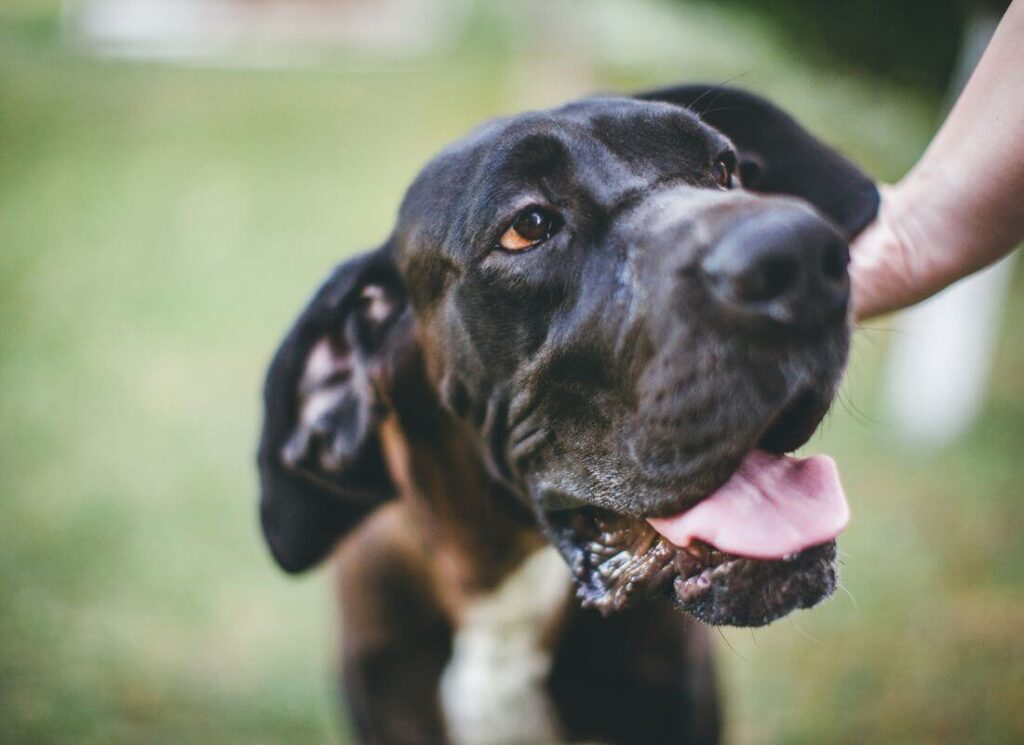
How to Prevent a Puppy from Becoming Aggressive
Preventing aggression in a puppy involves a combination of early training, socialization, and positive reinforcement. Here’s a guide on how to prevent a puppy from becoming aggressive:
- Early Socialization:
Expose your puppy to a variety of people, environments, and other animals during their critical developmental period. Positive interactions help build confidence and reduce fear-based aggression. - Positive Reinforcement Training:
Use positive reinforcement techniques to reward good behavior with treats, praise, or toys. This reinforces desired actions, making it more likely for the puppy to exhibit positive behavior consistently. - Establish Clear Boundaries:
Set clear rules and boundaries for your puppy from the beginning. Consistency is key to preventing confusion and frustration, which can lead to aggression. - Teach Bite Inhibition:
Train your puppy to have a soft mouth by teaching bite inhibition. This involves redirecting biting behavior and rewarding gentle mouthing. This skill is crucial to prevent aggressive biting as the puppy grows. - Avoid Rough Play:
Discourage rough play that could escalate into aggression. If the puppy becomes overly excited, redirect their energy to more appropriate toys or activities. - Provide Mental and Physical Stimulation:
Ensure your puppy gets enough mental and physical exercise. Boredom and excess energy can contribute to behavioral problems, including aggression. - Regular Vet Check-ups:
Regular veterinary check-ups are essential to rule out any health issues that might contribute to aggressive behavior. Pain or discomfort can be a significant factor in aggression. - Use Caution with Dominance-Based Techniques:
Avoid dominance-based training methods, as they can lead to fear-based aggression. Focus on positive reinforcement and building a trusting relationship with your puppy. There is never a need to intimidate, frighten, or harm your pet in the name of training. - Supervise Interactions:
Always supervise interactions between your puppy and children or other pets. This ensures that play remains appropriate and prevents any negative experiences that could contribute to aggression. - Enroll in Puppy Classes:
Consider enrolling your puppy in a well-managed puppy socialization class. These classes provide controlled environments for positive interactions with other puppies and people.
By incorporating these preventive measures, you can significantly reduce the likelihood of aggression in your puppy. Early intervention and consistent positive reinforcement contribute to shaping a well-behaved and non-aggressive adult dog.
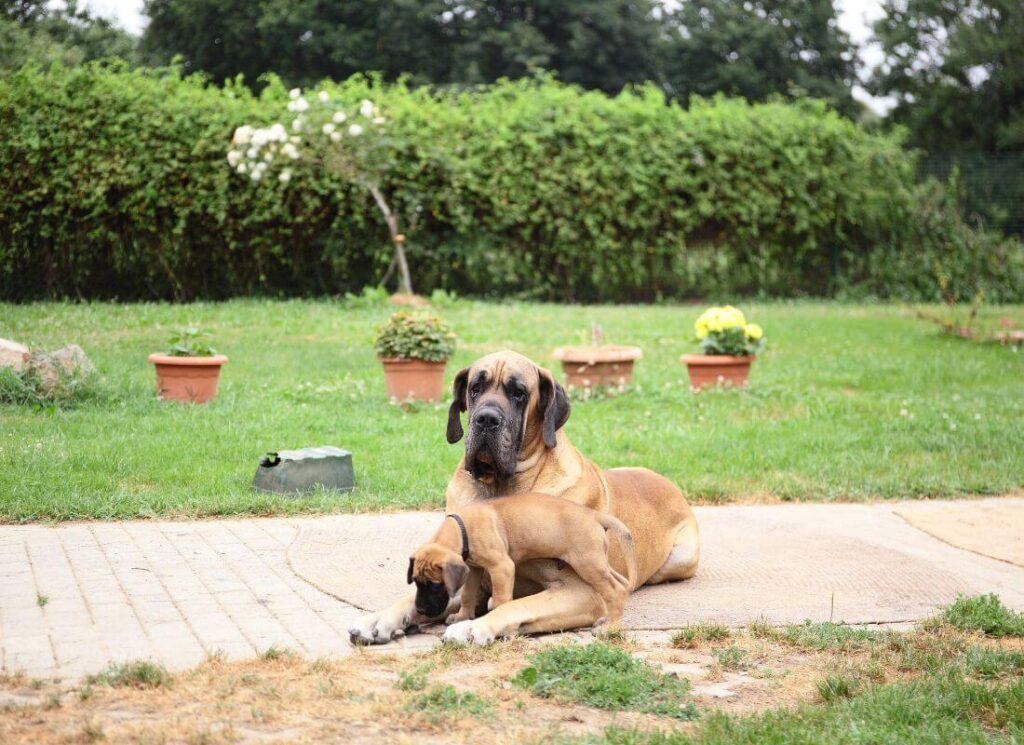
Does Genetics Cause Aggression in Dogs
Genetics can play a role in a dog’s predisposition to certain behaviors, including aggression. It is a well known phenomenon that fearful, anxious, or aggressive parents make puppies that are often the same.
A Dam that is stressed during her pregnancy can also cause the puppies to be aggressive or fearful. If a breeder then raises the puppies without a clean, enriching space to live the puppies are further set up to fail.
This makes it all that much more important to choose a good breeder.
While genetics can influence a dog’s temperament and behavior to some extent, it’s important to note that environmental factors and early experiences also significantly contribute to a dog’s behavior.



